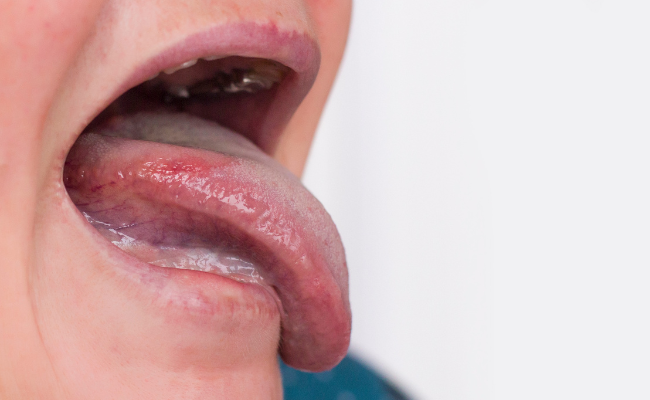How to Treat Leukoplakia?
- November 11, 2023
- No Comments

What is Leukoplakia?
Leukoplakia is identified by the presence of thick, white patches on the mucous membranes of the mouth, particularly on the tongue, gums, and the insides of the cheeks. Although typically painless, these patches are considered potentially precancerous, underscoring the importance of early detection and appropriate treatment. Chronic irritation, often induced by smoking or tobacco use, can give rise to these white patches, increasing the risk of progression into oral cancer.
Why is Treatment Necessary for Leukoplakia?
The necessity for treating leukoplakia arises from its potential to evolve into oral cancer. Although not every case of leukoplakia leads to malignancy, the presence of these white patches serves as a warning sign, warranting careful monitoring and intervention. The goal of treatment is to manage and reduce the risk of malignant transformation. Early detection and appropriate treatment become instrumental in preventing the development of oral cancer, making treatment essential for individuals diagnosed with leukoplakia.
How is Leukoplakia Treated?
- Identification and Diagnosis: The first step in treating leukoplakia is identification and diagnosis. A thorough examination of the mouth by a healthcare professional, often a dentist or oral surgeon, is conducted. In some cases, a biopsy may be recommended to determine the nature of the white patches and the presence of any abnormal cell changes.
- Risk Factor Modification: Addressing and modifying risk factors form a crucial aspect of leukoplakia treatment. Lifestyle changes play a pivotal role, including quitting smoking or tobacco use, reducing alcohol consumption, and adopting improved oral hygiene practices. These changes are fundamental in halting the progression of leukoplakia and reducing the risk of associated complications.
- Topical Medications: Topical medications may be prescribed to directly apply to the white patches. These medications aim to reduce inflammation and promote the regression of leukoplakic lesions. While not a universal treatment, topical medications can be effective in certain cases, contributing to the overall management of the condition.
- Surgical Intervention: In cases where leukoplakia is severe or exhibits signs of dysplasia, surgical intervention may be recommended. Surgical procedures may involve the removal of leukoplakic patches or the utilization of laser therapy to eliminate abnormal cells. Surgical intervention is a more aggressive approach but is often necessary for cases that pose a higher risk of progression.
- Cryotherapy: Cryotherapy, or freezing, is another treatment option for leukoplakia. Liquid nitrogen is applied to the leukoplakic lesions, effectively destroying abnormal cells and stimulating the growth of healthy tissue. This method is less invasive than surgical procedures and is particularly suitable for certain cases of leukoplakia.
- Photodynamic Therapy: Photodynamic therapy involves the use of a photosensitizing agent and light to target and destroy abnormal cells. While not as commonly employed as other treatments, it can be effective for certain types of precancerous lesions, including specific cases of leukoplakia.
Benefits of Treating Leukoplakia:
- Cancer Prevention: The primary and most significant benefit of treating leukoplakia is the prevention of oral cancer. By actively addressing precancerous lesions, the risk of malignant transformation is significantly reduced, potentially saving lives through early intervention.
- Improved Oral Health: Treatment of leukoplakia often involves adopting healthier oral hygiene practices and lifestyle changes. These changes contribute to improved overall oral health, reducing the risk of other dental issues and enhancing general well-being.
- Reduced Discomfort: Depending on the severity of leukoplakia, individuals may experience discomfort or irritation. Treatment aims to alleviate these symptoms, enhancing the patient's quality of life and restoring comfort in daily activities like eating and speaking.
- Enhanced Aesthetic Appearance: Surgical interventions or other treatments that remove leukoplakic patches can improve the aesthetic appearance of the oral cavity. This not only addresses health concerns but also restores a more normal and healthy appearance, boosting confidence and self-esteem.
- Long-Term Monitoring: Treating leukoplakia involves regular follow-up appointments to monitor the condition. This ongoing surveillance allows for the early detection of any recurrence or development of new lesions, enabling timely intervention and personalized care.
- Psychological Well-being: Addressing and treating leukoplakia can have positive effects on the psychological well-being of individuals. The knowledge that the condition is actively managed can alleviate anxiety, providing a sense of control and contributing to improved mental health.
- Educational Opportunities: Treatment of leukoplakia often involves educating individuals about the importance of lifestyle modifications and regular dental check-ups. This knowledge empowers patients to take an active role in their oral health, promoting a proactive approach to overall well-being.
Comments (0)